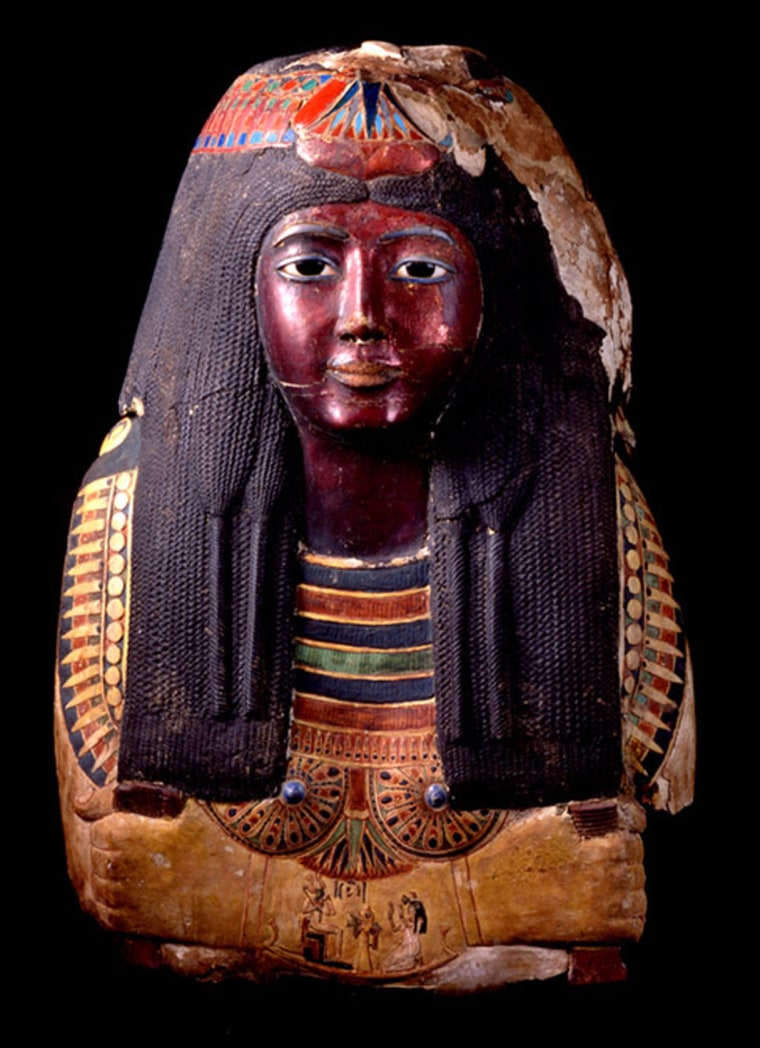If only the 3,000-year-old mummy mask at the Saint Louis Art Museum could talk. Maybe then the mystery of its rightful owner could be laid to rest, much like it was in an ancient Egyptian pyramid so many ages ago.
The Supreme Council of Antiquities for Egypt has given the Saint Louis Art Museum a May 15 deadline to turn over the burial mask of Ka Nefer Nefer, which they believe left the country illegally.
Officials with the museum are evaluating documents from the council that seek to prove that the mask from around 1307-1196 B.C., could have been stolen from an Egyptian Museum storage room.
"We don't feel like we've seen everything yet," Saint Louis Art Museum Director Brent Benjamin said. "It's premature to speculate what the outcome will be. We are looking at documentation and we are still awaiting other materials from Egypt."
Benjamin would not say if the museum planned to meet the deadline.
Egypt's antiquities council first made the claim in late February that the mask could have been stolen in the 1980s when an Egyptian Museum storage room was looted in Cairo.
Zahi Hawass, Egypt's antiquities chief, said he has grown impatient with the St. Louis museum and will turn the matter over to law enforcement or the legal system if the museum does not act soon.
"I have sent them all the proof they need," Hawass said. "I don't understand why they insist on fighting this."
Hawass said under no circumstances could the mask have reached the United States legally because it belonged to the Egyptian Museum and there is no indication that the museum ever sold it.
The museum bought the mask from an art dealer in the United States in 1998 for about $500,000, only after checking with authorities and the international Art Loss Register to see if the item was stolen. The Museum also approved the purchase with the Egyptian Museum, Benjamin said.
The burial cover for the Egyptian woman, made of wood and plaster with glass eyes, was excavated from a pyramid in 1952 in Saqqara, Egypt. Hawass said because of poor record-keeping practices, it was documented only once in 1959.
Benjamin said that so far, he believes his museum did everything it could to obtain the mask legally and in good faith. He said that the museum has a money-back guarantee with the dealer, if the mask has to be returned to Egypt.
The Saint Louis Art Museum's strongest piece of evidence that the item was not stolen is a letter from a Swiss collector included in the mask's provenance, an account of the item's history. The collector is said to have bought the mask in the early 1960s and kept it for more than 30 years until selling it in the 1990s to Ali Aboutaam and his brother Hicham Aboutaam, who run Phoenix Ancient Art in Switzerland and New York. Benjamin said that collector has asked to remain anonymous.
This case is one of several where source countries are trying to reclaim cultural objects that they believe inappropriately left their country, according to Sharon Flescher, director of the International Foundation for Art Research (IFAR).
"The art world in general is grappling with how to respond to these types of claims in an ethical and responsible manner," Flescher said.
